-
Posts
12444 -
Joined
-
Last visited
-
Days Won
554
Content Type
Profiles
Forums
Events
Everything posted by Fiery
-
I think the problem is that unlike the old H100i GTX, the new H110i GT integrates a Corsair Link controller device, and uses the Corsair Link framework instead of direct USB protocol. We'll have to check if it's possible to implement support for it without having to implement full Corsair Link framework support. But before that, we have to get a H110i GT device to check out how it works exactly. Please give us 1 or 2 weeks to get all that done. As soon as I have an update on this issue, I'll post a message into this topic. BTW, HWiNFO64 and SIV both support the Corsair Link framework. It is however not something that is supported by Corsair, nor does it work properly when Corsair's own Link software is running next to those software. The lack of Corsair Link SDK or any sort of technical/programming information from Corsair, and also the lack of synchronization in Corsair's own software make us reluctant to support Corsair Link in AIDA64. IMHO Corsair Link is a big mess that I personally would avoid -- but we may be forced to deal with it to support the latest generation Corsair water coolers...
-
Thank you for the data. It seems your H110i GT device is connected via a Corsair Link controller. Please note that AIDA64 only supports water cooling devices connected directly to the motherboard via a USB header. AIDA64 doesn't support the Corsair Link framework. However, since you've mentioned that H110i GT uses a new protocol (CoolIT), I'm not sure if AIDA64 supports it already. It might need additional tweakings if you could connect it directly to your motherboard.
-
I think the issue is because you've used empty string values during your test. When the strings have no value defined (but they exist in the Registry), then AIDA64 will automatically hide them from the SensorPanel or LCD. Strings must have a non-empty value to get them displayed on the SensorPanel/LCD.
-
AIDA64 doesn't support smoothing or moving average. You can however adjust the graph step and thickness settings to make it look less like a seismograph You may also want to try using Histogram instead of Line Graph. Histograms work best when it comes to displaying clock frequency changes. Line Graphs and Area Graphs are more suitable for higher resolution values like temperatures, voltages and fan speeds. Regards, Fiery
-

Blackscreens with Aida64 and R9 Fury in ULPS
Fiery replied to viperdsl's topic in Hardware monitoring
The issue is caused by ULPS. When using ULPS, and when the secondary GPU (or GPUs) go to sleep, it becomes very unstable to read GPU information for the secondary GPU. When a software tries to do that, the system could hang. We've been expecting AMD to resolve this bug of their video drivers for years already, but apparently it is still there and still causes such issues You can fix it by using either one of these workarounds: 1) Disable ULPS by scanning the Windows Registry for EnableUlps values, and setting them all to 0 (zero). You need to restart Windows to apply the changes. You will however increase the overall system draw of your system this way. 2) Disable Multi GPU support in AIDA64 / main menu / File / Preferences / Stability. You need to restart AIDA64 to apply the changes. You will however lose GPU information for the secondary GPU this way. Regards, Fiery -

Is it ok to use the compute fore light tasks while stress testing?
Fiery replied to epsilon's topic in General Discussion
Yes, you can use other tasks in the background or foreground while running the stress test. In some cases the best way to reveal a stability issue is by closing all background tasks and just let AIDA64 System Stability Test to use up all system resources. But in some other cases opening up a few web browser windows, chatting on Skype, watching videos while running the stress test would put a more difficult work load on the system, and may cause a BSoD quite quickly if it's not 100% stable. So it's best to try both, to make sure your system is up to anything you'd throw at it -
Thank you for the feedback. It means we need to completely disable Dell SMI support on your particular Dell system model, to make sure other users wouldn't experience the crash. If it's possible, please right-click on the bottom status bar of AIDA64 main window --> Sensor Debug --> Embedded Controller Dump. Copy-paste the first few lines of the results into this topic. I mean the lines that start with "DMI". Thanks, Fiery
-
No, it works exactly the way you've described it. Having multiple graphs in the same area would be very difficult to configure. It would be more difficult and less user-friendly than how it works now.
-
Please right-click on the bottom status bar of AIDA64 main window --> System Debug --> USB Dump. Copy-paste the full results into this topic, or attach the results as a TXT file to your post. You may need to enable status bar in AIDA64 / main menu / View first. Thanks, Fiery
-

fixed: Now, AIDA64 is not detecting eScan Total Security Suite
Fiery replied to Partha's topic in General Discussion
Thank you for the feedback! -

fixed: VCore/VID Skylake (ASRock Z170 Extreme6)
Fiery replied to Mikanoshi's topic in Hardware monitoring
Thank you for your feedback -

fixed: Fan speed and +12V bad reading on ASRock 970M Pro3
Fiery replied to rwky's topic in Bug reports
Thank you for your feedback -

fixed: Now, AIDA64 is not detecting eScan Total Security Suite
Fiery replied to Partha's topic in General Discussion
The mentioned new AIDA64 beta update is available for download at: http://www.aida64.com/downloads/latesta64xebeta After upgrading to this new version, make sure to restart Windows to finalize the upgrade. Let me know how it works -

fixed: VCore/VID Skylake (ASRock Z170 Extreme6)
Fiery replied to Mikanoshi's topic in Hardware monitoring
The mentioned new AIDA64 beta update is available for download at: http://www.aida64.com/downloads/latesta64xebeta After upgrading to this new version, make sure to restart Windows to finalize the upgrade. Let me know how it works -

fixed: Fan speed and +12V bad reading on ASRock 970M Pro3
Fiery replied to rwky's topic in Bug reports
The mentioned new AIDA64 beta update is available for download at: http://www.aida64.com/downloads/latesta64xebeta After upgrading to this new version, make sure to restart Windows to finalize the upgrade. Let me know how it works -
AlphaCool used to sell a 200x64 pixels monochrome display, but AFAIK it's not sold anymore: http://www.techbuy.com.au/p/82144/COOLING_MISCELLANEOUS_/Alphacool/25417.asp Mini-Box also has a picoLCD 256x64 monochrome display: http://www.mini-box.com/picoLCD-256x64-Sideshow-CDROM-Bay Aquaero 5 (256x64 pixels monochrome) is a nice multi-purpose device, although it's a bit expensive: https://aquacomputer.de/aquaero-5.html Also there's Matrix Orbital GX (240x64 pixels monochrome) that features a very fast USB protocol: https://www.matrixorbital.com/index.php?cPath=40 Then there's Crystalfontz CFA835 (244x68 pixels greyscale): https://www.crystalfontz.com/search.php?q=cfa835&submit=Search AIDA64 fully supports all those displays.
-
That could work, but IMHO Registry is a superior method. I personally never liked passing values via files. The best method would be using shared memory, to avoid putting a pressure on disk drives. Truth be told, for a developer, using shared memory is more difficult than just setting a Registry value or writing into a text file.
-
nMedia devices have character based (alphanumeric) displays. They do not support displaying bitmaps. What they do is a neat trick of defining custom characters, in order to show special visual effects. AIDA64 however does not support defining characters for any alphanumeric displays. Regards, Fiery
-
No, there's no issue about updating the values in the hardware monitoring module of AIDA64. If you check the Config / Environment Variables page, you can see that the changes are not committed in a way that AIDA64 could realize them. Probably using environment variables for such purposes isn't a good idea afterall. We could however pick another method. How about going for Registry? Like using the following path to import values from? HKEY_CURRENT_USER\SOFTWARE\FinalWire\AIDA64\ImportValues


